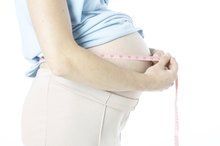Menopause & Thickening of Uterine Walls
Thickening of the uterine walls is a phenomenon experienced by some women during menopause. This condition is benign and, in most cases, doesn’t cause any pain. However, it can go undetected and can only be diagnosed by a health professional.
What Is It Called?
The thickening of the uterine walls is called endometrial hyperplasia. Hyperplasia is not something all women experience in menopause, but certain women will experience it.
What Causes It?
Premenstrual Sciatic Nerve Pain
Learn More
Endometrial hyperplasia is caused by a presence of excessive cells in the lining of the uterus. According to womentowomen.com, women who are in menopause are most likely to experience endometrial hyperplasia, due to the hormonal imbalances experienced in menopause.These hormonal imbalances cause the lining to overgrow, thus resulting in hyperplasia.
Symptoms
Often times women do not have any symptoms that would alert them to having hyperplasia, although the one common sign is abnormal bleeding. For this reason many women overlook this condition thinking it is a normal symptom of menopause. This bleeding may be light, heavy or spotty.
Diagnosis
Cervical Twinges and Signs of Early Pregnancy
Learn More
In order to receive a proper diagnosis, you must visit your gynecologist regularly. This is not something you can self-diagnose. Your physician will perform a blood test that will be used to check your hormone levels and an ultrasound which will give him a look into your uterus.
Treatment
If your hyperplasia is due to the use of hormone-replacement therapy, your physician may request that you come off of it in order to allow your hormones to return to the state they were in previously. You may also be administered progesterone.
Related Articles
References
Writer Bio
April Khan is a medical journalist who began writing in 2005. She has contributed to publications such as "BBC Focus." In 2012, Khan received her Doctor of Public Health from the University of Medicine and Dentistry of New Jersey. She also holds an Associate of Arts from the Art Institute of Dallas and a Master of Science in international health from University College London.







